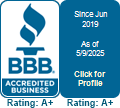Allstate Sprinkler Corporation is recognized as the most reliable, responsive, and respected fire sprinkler contractors in New York City and the metropolitan area. As a full-service organization, we are committed to assist you with all of your commercial and residential fire protection needs. Our services include:
- complete design-build abilities for the installation
- alterations and repairs of both fire sprinkler and fire standpipe systems
- NFPA 25 inspection and testing services
- Local Law 26 evaluation and compliance
- prompt correction of all FDNY violations
- 5- year hydrostatic pressure tests of sprinkler and standpipe connections
- emergency service and repairs
- fire pump installations, testing and repairs
- fire extinguisher sales and recharging
Common FDNY Violations
Allstate Sprinkler can help with all your fire sprinkler testing and inspection needs. Some of the most common violations we see are:
VC1- Fire Extinguishers
VC5- Inspection Record Keeping
VC6- Signs
VC7- Color Coding
VC12- General Maintenance (Spare Heads etc.)
VC17- Certificate of Fitness
VC20- 5-year testing
The United States Congress Office of Compliance states, “Fire sprinkler systems are expected to detect, control and suppress unwanted fires. They do not necessarily have to extinguish fires since the main goal for fire sprinklers is to dramatically reduce heat, flame, smoke, control fire growth, and provide additional time for occupants to exit a building safely. Fire sprinkler systems are required in most public buildings constructed since the 1970s. If they are inspected, maintained, and tested annually, fire sprinkler systems are the most effective way to protect buildings and their occupants from unwanted fires.” With that information, it’s also helpful to know that typical fire suppression system violations include:
Extinguishers
- Insufficient number of operating fire extinguishers.
- Lack of service or inspection within the past twelve months.
Hydrants
- International Fire Code regulations require a clear space of three feet be maintained around every hydrant.
- Hydrants hidden from plain view of firefighting crews must have clear signage indicating its presence.
Sprinklers
- Hanging ornaments, signage, or any obstruction from a sprinkler head fixture.
- Evidence of leakage, corrosion, damage, or in an improper orientation of the system.
- Spare sprinkler heads must be on hand (at least six) for immediate repair of any damaged sprinkler head.
- Sprinkler system is out of service for more than 4 hours in a 24-hr period; the building must be evacuated or an approved fire watch must be provided for all parties left unprotected by the shutdown until the sprinkler system has been returned to service.
- Automatic sprinkler system installations are required to be inspected and tested at least annually.
- Boxes, shelving, and interior walls blocking the sprinkler heads’ spray radii. Occupational Safety and Health Administration (OSHA) and the National Fire Protection Association (NFPA) require shelves and stacked materials to not exceed a height of 18 inches below the sprinkler heads, except for those perimeter wall-mounted shelving-stored materials.
FDNY Violations & Testing
Have you been served with a violation from the New York City Fire Department? Allstate Sprinkler can help you with all the necessary paperwork, scheduling, testing and repairs that may be required to satisfy the conditions of a violation(s). Allstate maintains a continuous and close working relationship with the fire suppression unit of the New York City Fire Department and offers an unprecedented level of experience in handling FDNY violations.

